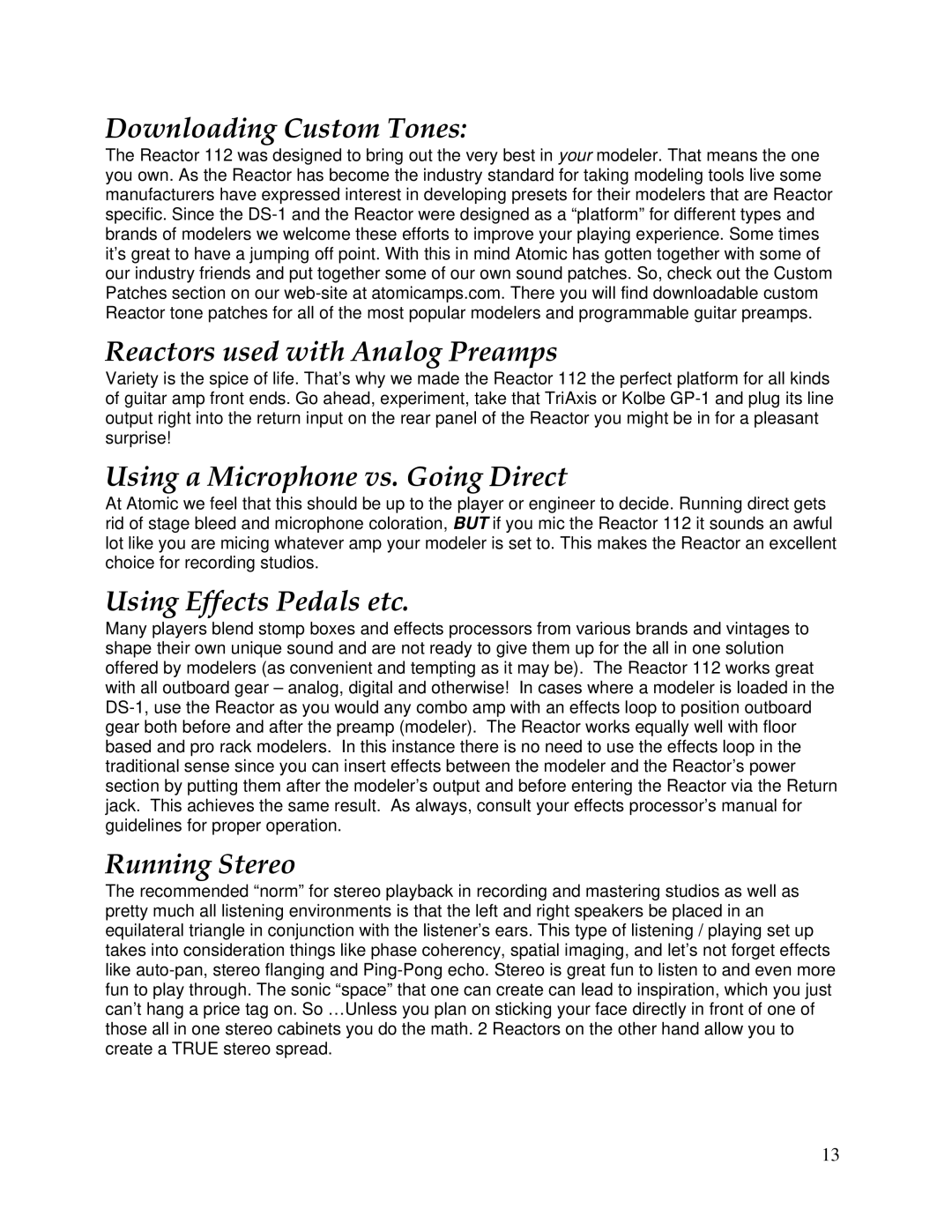Downloading Custom Tones:
The Reactor 112 was designed to bring out the very best in your modeler. That means the one you own. As the Reactor has become the industry standard for taking modeling tools live some manufacturers have expressed interest in developing presets for their modelers that are Reactor specific. Since the
Reactors used with Analog Preamps
Variety is the spice of life. That’s why we made the Reactor 112 the perfect platform for all kinds of guitar amp front ends. Go ahead, experiment, take that TriAxis or Kolbe
Using a Microphone vs. Going Direct
At Atomic we feel that this should be up to the player or engineer to decide. Running direct gets rid of stage bleed and microphone coloration, BUT if you mic the Reactor 112 it sounds an awful lot like you are micing whatever amp your modeler is set to. This makes the Reactor an excellent choice for recording studios.
Using Effects Pedals etc.
Many players blend stomp boxes and effects processors from various brands and vintages to shape their own unique sound and are not ready to give them up for the all in one solution offered by modelers (as convenient and tempting as it may be). The Reactor 112 works great with all outboard gear – analog, digital and otherwise! In cases where a modeler is loaded in the
Running Stereo
The recommended “norm” for stereo playback in recording and mastering studios as well as pretty much all listening environments is that the left and right speakers be placed in an equilateral triangle in conjunction with the listener’s ears. This type of listening / playing set up takes into consideration things like phase coherency, spatial imaging, and let’s not forget effects like
13
